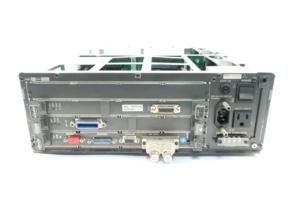GE IC9445B200AB: Technical Parameters, Industry Applications, and Related Models
The **GE IC9445B200AB** stands out as a lever-operated limit switch engineered for industrial applications. This watertight component features a standard contact arrangement with two independent circuits, offering versatility across various control systems. Engineers and technicians rely on this switch for its durability and precision in demanding environments. In this article, we dive deep into the **technical parameters of GE IC9445B200AB**, explore its wide-ranging **industry applications**, and compare it with **related models and their parameters**. Moreover, we present data in easy-to-read tables to help you quickly grasp its specifications and capabilities.
Whether you seek detailed **GE IC9445B200AB technical specifications** or aim to understand its role in **industrial automation**, this guide delivers comprehensive insights. Let’s begin by examining what makes this limit switch a go-to choice for professionals worldwide.
## Technical Parameters of GE IC9445B200AB
The **GE IC9445B200AB** offers a robust set of technical specifications that cater to the needs of industrial setups. Engineers value its reliability and adaptability in harsh conditions. Below, we outline its key parameters in a clear table, followed by detailed explanations of each specification.
| Parameter | Value |
|---|
| Operating Force | 2.25 lbs |
| Travel Differential | 0.25 inches |
| Contact Arrangement | Standard, 2 circuits |
| Enclosure Type | Watertight |
| Actuator Type | Lever |
### Understanding the Specifications
Let’s break down these parameters to highlight their significance:
– **Operating Force (2.25 lbs):** This value represents the force engineers must apply to activate the switch. With 2.25 pounds, the **GE IC9445B200AB** ensures precise actuation without requiring excessive effort, making it ideal for applications needing accurate control. For instance, in automated machinery, this force strikes a balance between sensitivity and stability.
– **Travel Differential (0.25 inches):** This specification measures the distance the lever travels to switch states. A 0.25-inch differential enhances the switch’s responsiveness, allowing it to detect small movements effectively. Consequently, technicians favor it in systems where quick feedback is critical.
– **Contact Arrangement (Standard, 2 Circuits):** The dual-circuit design empowers users to manage two independent control signals within a single unit. This feature simplifies wiring and boosts flexibility in complex setups, such as control panels or multi-stage automation processes.
– **Enclosure Type (Watertight):** The watertight enclosure protects the switch from dust, moisture, and other environmental hazards. Therefore, industries operating in wet or dusty conditions, like food processing or outdoor manufacturing, benefit significantly from this durability.
– **Actuator Type (Lever):** The lever actuator provides a straightforward mechanism for triggering the switch. Users appreciate its simplicity, as it allows easy integration into systems with moving parts, such as conveyor belts or robotic arms.
These specifications collectively position the **GE IC9445B200AB** as a reliable choice for engineers seeking precision and resilience. Furthermore, its design aligns with the needs of modern industrial automation, where uptime and accuracy matter most.
## Industry Applications of GE IC9445B200AB
The **GE IC9445B200AB** excels across multiple industries thanks to its rugged construction and versatile functionality. Engineers integrate this limit switch into systems requiring dependable position detection and control. Below, we explore its primary applications, complete with real-world examples to illustrate its value.
### 1. Manufacturing
In manufacturing, professionals deploy the **GE IC9445B200AB** to monitor and control moving components. For example, factories use it on assembly lines to detect when products reach specific points. When a product triggers the lever, the switch signals the system to advance to the next stage, ensuring seamless production. This precision reduces downtime and boosts efficiency, making it a staple in high-volume manufacturing plants.
Moreover, its watertight design allows manufacturers to use it in environments with coolant sprays or dust, such as metalworking shops. The switch’s ability to withstand these conditions enhances its appeal for long-term use.
### 2. Industrial Automation
Automation systems depend heavily on limit switches like the **GE IC9445B200AB** to regulate machinery movements. Technicians install it to set boundaries for robotic arms, preventing them from overextending. For instance, in a packaging facility, the switch ensures a robotic arm stops at the correct position to pick up items, maintaining workflow accuracy.
Additionally, its dual-circuit configuration supports advanced automation setups. Engineers can program one circuit to halt motion and another to initiate a secondary action, streamlining complex processes.
### 3. Control Systems
In control systems, the **GE IC9445B200AB** serves as a critical safety and operational component. Operators use it in control panels to activate or deactivate circuits based on predefined conditions. For example, in an industrial HVAC system, the switch might shut down a unit if a damper reaches its fully open position, preventing overload.
Its reliability in such roles underscores its importance in maintaining safe and efficient operations. Furthermore, the lever actuator simplifies integration into existing control frameworks, saving installation time.
### Why It Matters
These applications demonstrate how the **GE IC9445B200AB** adapts to diverse industrial needs. Its robust design and precise parameters enable engineers to tackle challenges in manufacturing, automation, and control systems effectively. As industries evolve, this limit switch remains a trusted tool for enhancing productivity and safety.
## Related Models and Their Parameters
Besides the **GE IC9445B200AB**, General Electric offers related models that cater to similar yet distinct requirements. These alternatives provide engineers with options to match specific project demands. Below, we compare two related models—**GE IC9445A200B** and **GE IC9445B200AA**—with their parameters in a table, followed by an analysis of their differences.
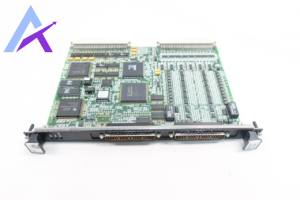
| Model | Operating Force | Travel Differential | Contact Arrangement | Enclosure Type | Actuator Type |
|---|
| GE IC9445B200AB | 2.25 lbs | 0.25 inches | Standard, 2 circuits | Watertight | Lever |
| GE IC9445A200B | 2.0 lbs | 0.20 inches | Standard, 1 circuit | Watertight | Lever |
| GE IC9445B200AA | 2.5 lbs | 0.30 inches | Standard, 2 circuits | Watertight | Lever |
### Comparing the Models
Let’s analyze how these models differ and when engineers might prefer one over the others:
– **GE IC9445A200B:** This model requires a slightly lower operating force (2.0 lbs) and features a smaller travel differential (0.20 inches). With only one circuit, it suits simpler applications where a single control signal suffices. Engineers might choose this model for lightweight machinery or systems with minimal actuation force, such as small conveyor systems. Its watertight enclosure ensures durability, aligning with the **GE IC9445B200AB**’s resilience.
– **GE IC9445B200AA:** In contrast, this variant demands a higher operating force (2.5 lbs) and offers a larger travel differential (0.30 inches). Like the **GE IC9445B200AB**, it includes two circuits, making it suitable for complex setups. Technicians might select it for heavy-duty applications where stronger actuation prevents accidental triggers, such as in rugged outdoor equipment. The watertight design remains consistent, ensuring reliability across environments.
– **GE IC9445B200AB:** Positioned between the two, this model balances operating force (2.25 lbs) and travel differential (0.25 inches) with dual circuits. Its versatility makes it a middle-ground option, appealing to a broad range of uses, from manufacturing to automation.
These differences allow professionals to tailor their choice to specific needs. For instance, the **GE IC9445A200B** excels in lighter-duty tasks, while the **GE IC9445B200AA** thrives in tougher conditions. Meanwhile, the **GE IC9445B200AB** offers a well-rounded solution for varied applications.
Explore more GE industrial components on our products page. For additional insights into limit switches, visit this authoritative resource: Automation Direct Limit Switches.
## Expanding the Discussion: Why Choose GE IC9445B200AB?
Now that we’ve covered the technical parameters, applications, and related models, let’s explore why the **GE IC9445B200AB** remains a preferred choice in industrial settings. Engineers prioritize components that deliver consistent performance, and this limit switch meets that demand with its thoughtfully designed features.
### Durability in Harsh Environments
The watertight enclosure sets the **GE IC9445B200AB** apart from many competitors. Industries like chemical processing or marine manufacturing expose equipment to moisture and contaminants daily. Here, the switch’s ability to resist ingress ensures long-term functionality, reducing maintenance costs and downtime.
### Precision and Control
With an operating force of 2.25 lbs and a travel differential of 0.25 inches, the switch provides precise control over mechanical actions. This precision proves invaluable in automation, where even minor deviations can disrupt operations. For example, in a bottling plant, the switch ensures caps align perfectly with bottles, maintaining product quality.
### Versatility Across Applications
The dual-circuit design enhances its adaptability. Engineers can configure it for multiple purposes within a single system, such as triggering alarms and stopping machinery simultaneously. This flexibility reduces the need for additional components, simplifying designs and cutting expenses.
### Ease of Installation
The lever actuator simplifies setup, allowing technicians to integrate the switch quickly into existing systems. Whether mounted on a conveyor or a robotic arm, its straightforward design minimizes installation time, enabling faster project completion.
These advantages explain why professionals across industries trust the **GE IC9445B200AB**. Its combination of durability, precision, versatility, and ease of use makes it a standout option in the realm of limit switches.
## Practical Tips for Using GE IC9445B200AB
To maximize the benefits of the **GE IC9445B200AB**, engineers and technicians should follow best practices during selection, installation, and maintenance. Here are actionable tips to ensure optimal performance:
### Selection
Before choosing the **GE IC9445B200AB**, assess your application’s requirements. Confirm that the operating force (2.25 lbs) and travel differential (0.25 inches) align with your system’s needs. If you require only one circuit, consider the **GE IC9445A200B** instead. Conversely, for heavier actuation, the **GE IC9445B200AA** might suit better.
### Installation
During installation, secure the switch in a position where the lever can move freely without obstruction. Test the actuation force to ensure it triggers reliably under operational conditions. Additionally, verify that the watertight seal remains intact to protect against environmental factors.
### Maintenance
Regularly inspect the switch for wear, especially on the lever and enclosure. Clean it with a damp cloth to remove debris, avoiding harsh chemicals that could damage the seal. Periodically check the circuits for continuity to maintain consistent performance.
By following these steps, users can extend the lifespan of the **GE IC9445B200AB** and maintain its efficiency in industrial applications.
## Conclusion
The **GE IC9445B200AB** emerges as a reliable and versatile limit switch that meets the demands of modern industrial environments. Its technical parameters—including an operating force of 2.25 lbs, a travel differential of 0.25 inches, and a dual-circuit design—equip it for precise control and feedback. Engineers leverage its capabilities in manufacturing, automation, and control systems, appreciating its durability and adaptability. Moreover, related models like the **GE IC9445A200B** and **GE IC9445B200AA** provide tailored alternatives, ensuring options for every scenario.
Understanding the **GE IC9445B200AB technical parameters** and **industry applications** empowers professionals to make informed decisions. Whether you need a robust switch for a wet manufacturing floor or a precise component for an automated line, this model delivers. Explore our products page for more GE solutions, or deepen your knowledge with this external resource on limit switches. The **GE IC9445B200AB** proves that quality engineering drives industrial success.



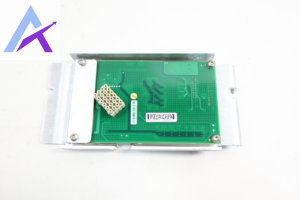



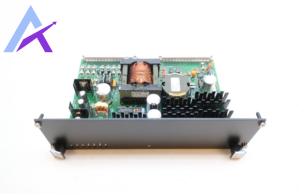


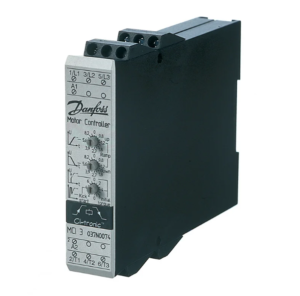 DD
DD